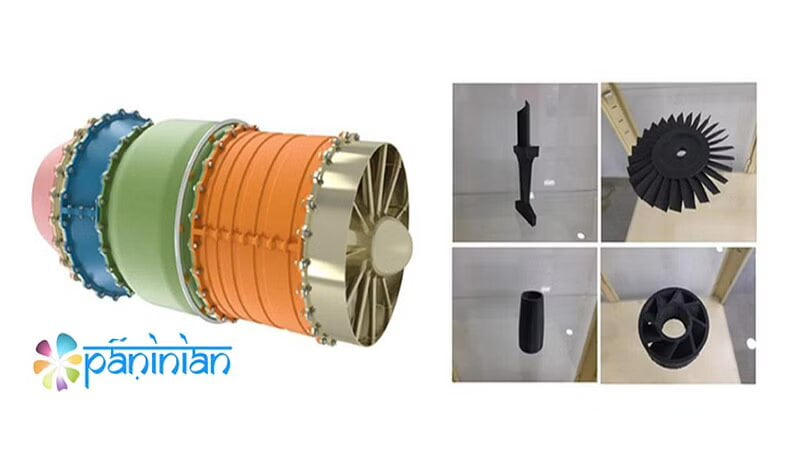In good news for India’s defence industry, a private start-up is getting closer to making its own engine that can power cruise missiles and larger unmanned aerial vehicles (UAVs). This could end India’s reliance on foreign companies.
Paninian India Private Limited, which is based in Hyderabad, has finished the “conceptual validation” of its 4.5 KN Turbojet Engine, and work on the prototype has begun.
Raghu Adla, the founder of Paninian, “We are not doing reverse engineering. Instead, we are making a whole family of aero engines that will be able to power everything from cruise missiles to large UAVs.”
The engine is being made into a new family with thrust between 3 and 12 kilonewtons (kN) and digital twins that are boosted by artificial intelligence (AI).
Indian Air Force aircraft like the Jaguar, Sukhoi, and Mirage 2000 will use Digital Twins with AI to model and predict the performance of their older engines. This will help them do their jobs better and last longer.
Adla, a first-generation entrepreneur, said, “This can now be used as a tool to study how long engines last, and it will help the IAF and CEMILAC [Centre for Military Airworthiness and Certification] a lot in their study of performance degradation.”
Such Digital Twins, which are needed for cutting-edge prognostics, engine health and performance monitoring, were made from scratch by Indian engineers, he said, and India can extend the life of engines locally and accurately without help from other countries.
Even though Paninin has started setting up a real test bed for its engine, the parts of the engine will still be tested at the National Aerospace Laboratory for 2,000 hours.
After the 2019 Balakot strike and the fight between the Indian and Pakistani air forces that followed, Adla decided to work on the project.
Gantayata Gouda, a former senior scientist and programme director at DRDO, was one of the people he hired for the start-up. Other people he hired had worked in propulsion and structural engineering for companies like General Electrics and Rolls Royce.
Adla emphasised how important it was for the government to help start-up businesses like these by giving grants and giving them access to labs so that problems with making an Indian jet engine could be solved.
He also said that Paninian is looking for possible partnerships with both public and private players to help the project grow and get to the end users as quickly as possible.
He said that this innovation could help India become “Atma Nirbhar” in the strategic field of aero engines as part of the “Make in India” programme.
The Defense Research and Development Organisation (DRDO) has been working on a 4.5kN aero engine, which sources in the industry say is a copy of the Russian NPO Saturn 36 MT engine that India uses.
Experts in the field, on the other hand, said that the DRDO’s work is not scalable or modular enough to make a family of engines.
